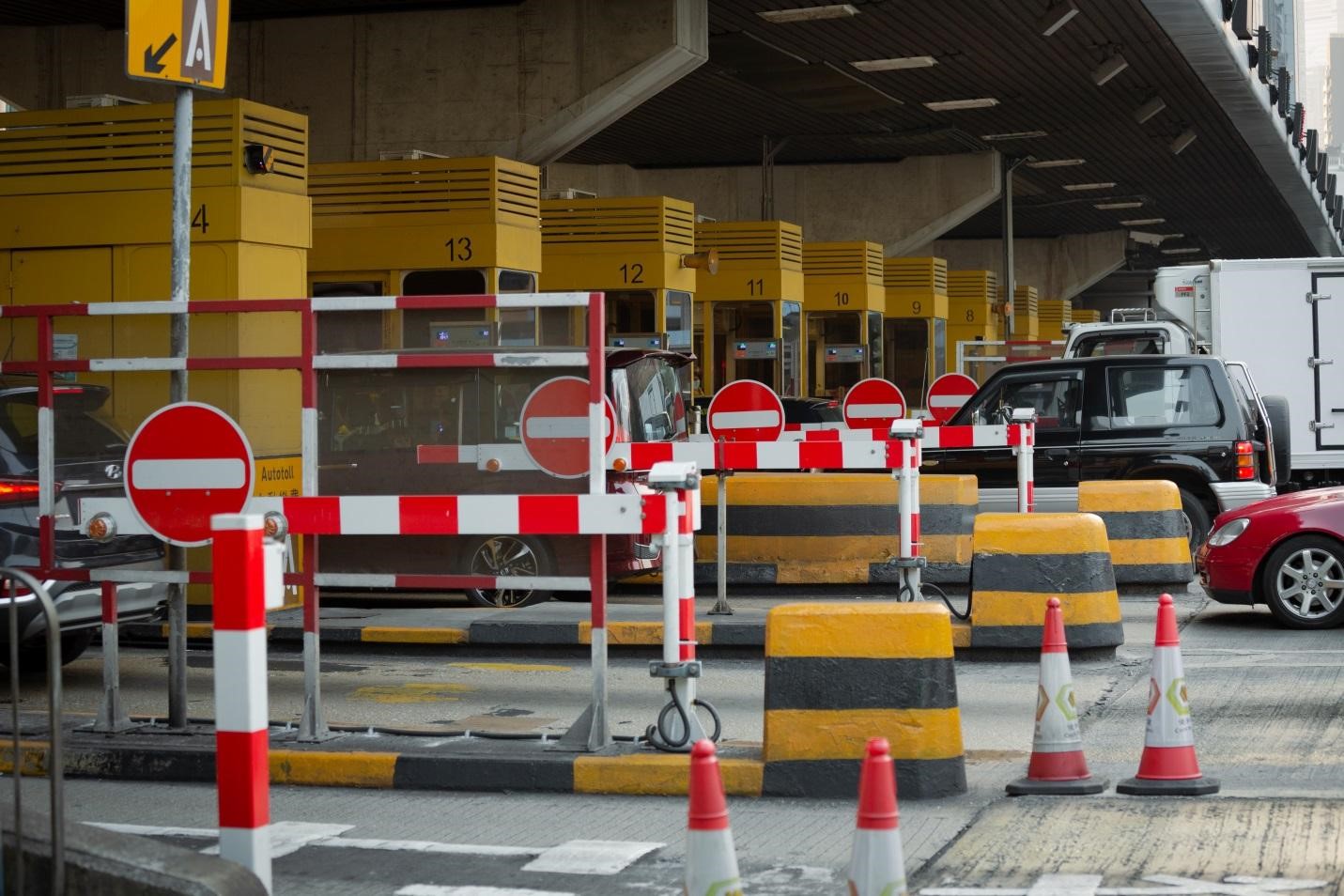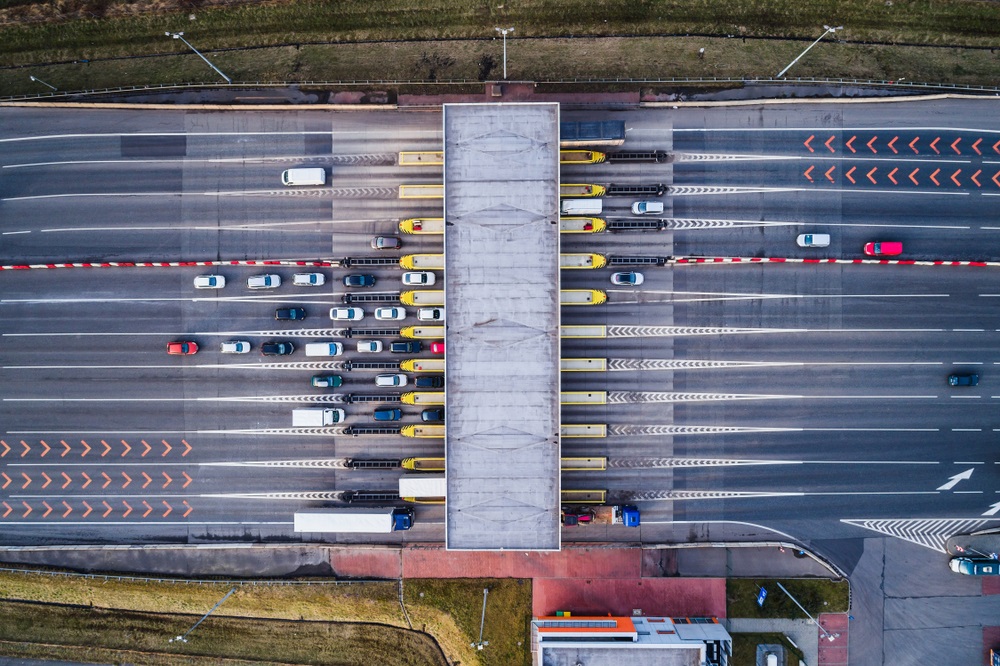
A toll road, tollway, and turnpike are all different names for the same thing: a public road that requires motorists to pay a fee (toll) before they are granted passage. The money collected goes toward the maintenance and upkeep of the road in question.
If you’re new to Texas roads, you need to understand how the system works to avoid paying hefty fines for toll road violations.
How do toll roads work in Texas? Here’s everything you need to know.
Who Owns the Toll Roads in Texas
The Lone Star State has one of the most expansive tollway networks in the country. The majority of the toll roads are located in Dallas-Fort Worth (DFW), Houston, and Austin areas, with a total of 20+ toll bridges in different parts of the state.
Some notable ones include the Free Trade toll bridge in Cameron County, as well as the toll bridges in Mountain Creek Lake and Lewisville Lake. The state also has eight active express lanes, with more expected in the coming months.
Toll roads in Texas are categorized based on the region or city they are in and are all owned by the Texas Department of Transportation (TxDOT). Here’s a brief overview of the principal toll road areas in the state.
Toll Roads in the Dallas-Fort Worth Area
The toll facilities in the DFW area are managed and run by the DFW Airport in conjunction with the North Texas Toll Authority. The region hosts both toll tunnels and toll bridges. Here’s a list of all the tollways in DFW.
- Toll Bridges in Lewisville and Mountain Creek Lake
- Sam Rayburn Tollway
- Addison Airport Toll Road Tunnel
- President George Bush Turnpike
- Chisholm Trail and International Parkways
- Dallas North Tollway
- 360 Tollway
Toll Roads in the Houston Area
The Houston area metro lanes and toll roads are managed and run by the Harris County Metropolitan Transit Authority and the Harris County, Montgomery County, and Fort Bend County Toll Road Authorities. Here’s a list of all the tollways in the Houston area.
- Westpark Tollway
- Tomball Tollway
- SH 242
- Sam Houston Tollway and Ship Channel
- Katy Freeway Managed lanes US 290 and I-10 QuickRide
- Hardy Toll Road and Airport Connector
- Grand Parkway, Fort Bend County
- Fort Bend Parkway and Extension
Toll Roads in the Austin Area
The toll roads in Austin are managed and run by the North East Texas, Central Texas, Cameron County, Camino Real Regional Mobility Authorities, the H130 Concession Company, and the Texas Department of Transportation. Below is a list of all the tollways and toll roads in the Austin area.
- Segments 1-4 of the SH130 Pickle Parkway
- SH 550
- SH 45 North and South East
- Segments 5-6 of the SH 130 Extension
- Phase 1 and 2 of the Manor Expressway
- Loop 49
- Mopac Expressway / Loop 1
- Cesar Chavez Managed Lanes / Loop 375
- Toll Road 183A
How Much Are Toll Roads in Texas

The precise amount you’re required to pay depends on the state authority managing the toll road you’re on. For instance, the rates for toll roads in the DFW area managed and run by the North Texas Toll Authority are available here. The rates for roads that fall under the Central Texas Regional Mobility Authority jurisdiction can be viewed here.
Simply do a quick online search of the toll facility in question to view the applicable rates on the toll authority’s website. Alternatively, you can use this online toll calculator instead for a fast and convenient way to determine how much you’ll need to pay.
How to Pay Tolls in Texas
There are several payment avenues available to pay tolls in the Lone Star State. In North Texas, for instance, payments can be made through TollTag or ZipCash. While customers can use any of the two providers, TollTag is the go-to method for most drivers in the region since it offers lower rates compared to ZipCash.
If you’re wondering how to get a Texas Toll Tag, you’ll first need to set up an account. Step-by-step instructions on how to do this are provided on the North Texas Toll Authority website.
If you don’t have a TollTag account, the default billing method that will be used is ZipCash. A monthly toll bill will be sent to your registered address, at which point you’re required to pay the amount indicated on the invoice within 25 days of receipt. Late payments attract late fees ranging anywhere between $10 and $25 per invoice.
Other billing service providers for toll roads owned by the Texas Department of Transportation include TxTag and Houston EZ TAG. The latter is issued by the Harris County Toll Road Authority for tolling facilities within the Houston area.
TxTag, on the other hand, is universal in the state, meaning you can use it to access all tolling facilities in Texas, regardless of where you are. Toll tag facilities are fitted with electronic gantries that support a cashless mode of payment. Use this link to log in to a TxTag account.
How to Pay Texas Toll Without TxTag
If you don’t have an active account with TxTag or any of the other payment providers, you will receive a Pay-By-Mail invoice at your registered address indicating the amount you owe.
If you don’t receive a bill, it might be because you have an outdated address on the title of your vehicle. Should that be the case, visit the Vehicle Registration Page on the Texas DMV website to update your details.
How to Pay Texas Tolls Online
If you have an account with any of the service providers listed in the previous sections, all you have to do is log in to the portal, navigate to the billing and payments section of the site, and follow the prompts provided to settle any outstanding bill using your preferred payment method.
In the meantime, are you planning a road trip on I-45? Check out these must-visit pit stops that will blow your mind.

